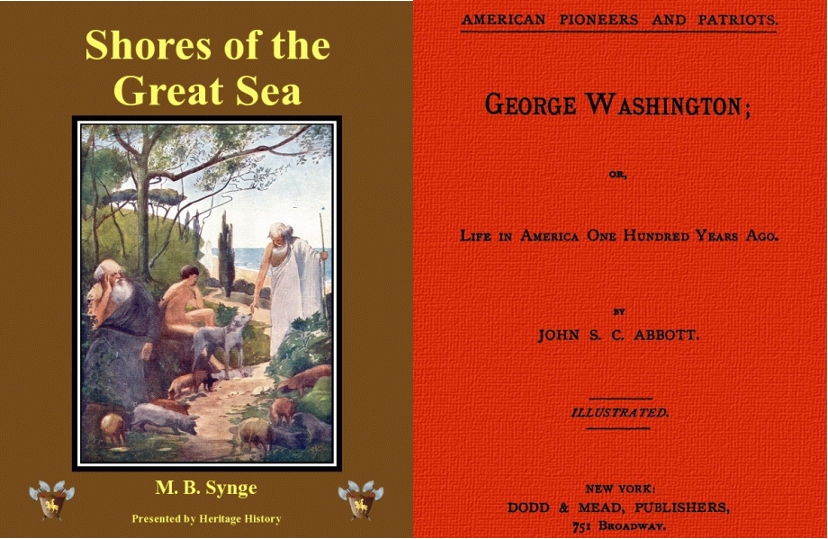In grades 5-7, students are at a critical stage of development where they are beginning to form their own understanding of the world around them. This is a time when they are eager to learn about different cultures, historical events, and the interconnectedness of the world. World and U.S. history education plays a vital role in providing students with the knowledge and skills they need to become informed and engaged citizens.
Factual and Culturally Relevant Curriculum: Fostering Thoughtful, Informed Students
The Investigating History curriculum was created in partnership with teachers and history academics, ensuring it provides a curriculum that is factual, culturally relevant, and inclusive. Learning about the world’s rich tapestry of cultures, traditions, and perspectives equips students with a global outlook, enabling them to appreciate the interconnectedness of humanity and to become informed, empathetic, and responsible citizens. Exposure to diverse cultures nurtures cross-cultural understanding, fosters respect for different ways of life, and breaks down barriers of prejudice. By exploring historical events in this manner, students can gain insights into the foundational principles of democracy, civil rights, and social justice, contribute to a more just and inclusive global society, and shape their civic engagement and future contributions to society.
Here are two tips for teaching world and U.S. history:
- Use a variety of teaching methods: Students learn best when they are exposed to a variety of teaching methods, such as lectures, discussions, simulations, and hands-on activities.
- Incorporate primary and secondary sources: Use primary sources, such as letters, diaries, and speeches, to bring history to life. Use secondary sources, such as textbooks and articles, to provide students with context and background information.
Investigating History: Free History Course Modules, Grades 5-7
All of the materials linked below are in pdf format and are made available here by the Massachusetts Dept. of Elementary and Secondary Education. Additionally, the lesson manuals and some of the other content are also in docx and ppt format within the unit folders linked below.
- Adoption and Implementation Guide
- Design Specifications
- Investigating History Curriculum Guidebook
- Lesson Internalization Road Map
- Suggested Pacing
- Unit Atlas
Grade 5: United States History to the Civil War and the Modern Civil Rights Movement
Fifth graders in this history course examine the Americas from their earliest precolonial and colonial periods to the Civil War, Reconstruction, and the struggle for equal rights in the 20th century. The foundation of the fifth grade curriculum is the understanding that many different people’s stories, works, and perspectives have shaped the United States of America.
Unit 1: Early Colonization and the Growth of Colonies
Unit 1 looks at the United States’ unique past prior to becoming a nation. Students study the distinct and interconnected societies established in North America by the conflicts and encounters of European, Indigenous, and African peoples, with primary emphasis on the 17th and first half of the 18th century.
- G5.U1 – Unit Overview
- G5.U1 – Inquiry Map
- G5.U1 – Unit 1 Glossary
- G5.U1.L1-3, Cluster 1 – Indigenous Societies (Materials)
- G5.U1.L4-6, Cluster 2 – European Nations (Materials)
- G5.U1.L7-L13, Cluster 3 – Britains North American Colonies (Materials)
- G5.U1.L14-19, Cluster 4 – Slavery and Freedom (Materials)
- G5.U1.L20-21, Cluster 5 – British Colonies in 1750 (Materials)
- Summative Assessment
Unit 2: The American Revolution and Principles of United States Government
The second Grade 5 unit analyzes the manner in which Great Britain’s 13 North American colonies formed the United States and built a structure of government for the new country. While Unit 1 provided a broad overview of North America over many centuries, Unit 2 has a narrower scope and historical theme: the dramatic decades from the outbreak of the French and Indian War to the drafting of the Constitution and Bill of Rights.
- G5.U2 – Unit Overview
- G5.U2 – Inquiry Map
- G5.U2 – Unit 2 Glossary
- G5.U2.L1-6, Cluster 1 – The Colonies before the Revolution (Materials)
- G5.U2.L7-13, Cluster 2 – Revolution and Aftermath (Materials)
- G5.U2.L16-21, Cluster 3 – Building a New Government (Materials)
- Summative Assessment
Unit 3: The Growth of the Republic
Unit 3 explores the decisions and difficulties faced by the U.S. during its first fifty years of independence. The conflict between slavery and freedom, as well as the disputes over Indigenous people’ territory and sovereignty, are important themes that carry over from Units 1 and 2.
- G5.U3 – Unit Overview
- G5.U3 – Inquiry Map
- G5.U3.L1-13, Cluster 1 – Foreign Policy (Materials)
- G5.U3.L14-19, Cluster 2 – Slavery (Materials)
- G5.U3.L20-24, Cluster 3 – Economy and Workers (Materials)
- Summative Assessment
Unit 4: Slavery, the Legacy of the Civil War, and the Struggle for Civil Rights for All
The 5th grade exam unit explores slavery, the Civil War, and civil rights struggles. Students investigate the issue of slavery, its role in the Civil War, and the expansion of civil rights to African Americans. The unit covers the 13th, 14th, and 15th Amendments and the Reconstruction era. It also discusses the Jim Crow era and the failure of the federal government to secure civil rights for all. The unit concludes with lessons on the 20th-century African American Civil Rights Movement and its impact on other civil rights movements.
- G5.U4 – Glossary
- G5.U4 – Inquiry Map
- G5.U4 – Unit Overview
- G5.U4.L1-4, Cluster 1 – Abolitionist Movement (Materials)
- G5.U4.L5-9, Cluster 2 – Civil War (Materials)
- G5.U4.L10-15, Cluster 3 – Progress Backlash (Materials)
- G5.U4.L16-20, Cluster 4 – Civil Rights Movements (Materials)
- Summative Assessment
Grade 6: World Geography and Ancient Civilizations I
Students will learn about the cultures, geography, and history of the ancient world outside of North America in this course. It provides an overview of early human history as well as each populated geographic area and the many communities that evolved there. The belief that every location on earth is intriguing and worthy of study and that every place and people have contributions worthy of our examination and amazement underpins this approach.
Unit 1: Human Origins
In Unit 1, students learn about the origins of man and how we developed into the modern humans that we are today. (For a godly viewpoint of world history and how man was created, please see World and Earth History from Biblical Perspectives.)
- G6.U1 – Unit Overview
- G6.U1 – Inquiry Map
- G6.U1.L1-3, Cluster 1 – Studying the Distant Past (Materials)
- G6.U1.L4-12, Cluster 2 – Evolution of Homo Sapiens in the Paleolithic (Materials)
- G6.U1.L13-21 & 24-25, Cluster 3 – Neolithic Era (Materials)
- G6.U1.L22-23 – Summative Assessment (Teacher Guidance)
Unit 2: Western Asia, The Middle East, and North Africa
Unit 2 investigates former cultures in Western Asia and North Africa where the world’s oldest known civilizations and cities evolved. Everyday life in communities and households, faith beliefs and customs, governance, leadership, and civil interactions are all key issues of investigation.
- G6.U2 – Unit Overview
- G6.U2 – Inquiry Map
- G6.U2.L1-5, Cluster 1 – Geography (Materials)
- G6.U2.L6-L11, Cluster 2 – Mesopotamia (Materials)
- G6.U2.L12-19, Cluster 3 – Egypt and Nubia (Materials)
- G6.U2.L20-22, Cluster 4 – New Models of Governing (Materials)
- G6.U2.L23-33, Cluster 5 – Abrahamic Religions (Materials)
- Summative Assessment
Unit 3: Sub-Saharan Africa
This unit on Sub-Saharan Africa’s geography and ancient history aims to illustrate the extent, variety, and interactions of Africa’s civilizations and cultures while giving students the ability to associate Africa’s ancient heritage with its modern one.
- G6.U3 Unit Overview
- G6.U3 – Inquiry Map
- G6.U3.L1-10, Cluster 1 – Geography and Environment (Materials)
- G6.U3.L11-20, Cluster 2 – Diverse Societies (Materials)
- G6.U3.L21-L30, Cluster 3 – Trade and Cross-Cultural Exchange (Materials)
- G6.U3.L31-L34, Cluster 4 – Religions in Africa (Materials)
- Summative Assessment
Unit 4: Central America, the Caribbean Islands, and South America
This sixth-grade social studies unit explores the Ancient Americas, focusing on cultures such as the Olmec, Teotihuacanos, Maya, Caral Supe, Chavín de Huantar, and Taíno. Students investigate trade, economy, technology, ritual, diplomacy, and leadership in these societies, comparing their similarities and differences. Students choose a city from the ancient Americas to research, reflecting on how it mirrored its people’s priorities and beliefs, and consider improvements for modern cities.
- G6.U4 – Inquiry Map
- G6.U4 – Unit Overview
- G6.U4.L1-5, Cluster 1 – Geography (Materials)
- G6.U4.L6-8, Cluster 2 – Earliest Complex Societies (Materials)
- G6.U4.L9-21, Cluster 3 – Mesoamerica (Materials)
- G6.U4.L22-23, Cluster 4 – Taino (Materials)
- Summative Assessment
Grade 7: World Geography and Ancient Civilizations II
This course investigates the geography and history of Central and South Asia and asks three essential questions to evaluate the impact of elements such as geography, belief systems, and leadership on the progress of the wider community. Students also investigate the concepts and ideals of East Asia’s early peoples, including kings, the privileged, and everyday people. Then they learn about the first millennium of Silk Route travel, including the zenith of trade in the 7th and 8th centuries.
Unit 1: South and Central Asia
The geographical features and historical events of Central and South Asia are studied in the first unit of Grade 7, where students attempt to resolve three fundamental inquiries that help them evaluate the impact of multiple variables on the evolution of communities, such as location, systems of belief, and governance.
- G7.U1 – Unit Overview
- G7.U1 – Inquiry Map
- G7.U1.L1-6, Cluster 1 – Geography (Materials)
- G7.U1.L7-11, Cluster 2 – Harappan Society (Materials)
- G7.U1.L12-21, Cluster 3 – Post-Harappan Developments (Materials)
- G7.U1.L22-31, Cluster 4 – Kingship and Golden Ages in Ancient India and Central Asia (Materials)
- G7.U1 – Teacher Version – Summative Assessment
- Summative Assessment
Unit 2: East Asia
This East Asia unit uses a variety of historic writings, creative works, and specimens to expose the thoughts and principles of the region’s early peoples—rulers, the privileged, and ordinary citizens alike—as well as the various manners in which East Asian peoples confronted and impacted each other.
- G7.U2 – Unit Overview
- G7.U2 – Inquiry Map (East Asia)
- G7.U2.L1-4, Cluster 1 – Geography and Environment (Materials)
- G7.U2.L5-21, Cluster 2 – Early China (Materials)
- G7.U2.L22-27, Cluster 3 – Early Korea (Materials)
- G7.U2.L28-33, Cluster 4 – Classical and Early Medieval Japan (Materials)
- Summative Assessment
Unit 3: The Silk Routes
Cultural interchange and commerce over hundreds of years across the wide Eurasian landscapes and mountains pulled together all of Asia and still carry on today. This unit concentrate on the first 1,000 years of Silk Route travel, which covers the golden era of trade in the 7th and 8th centuries.
– love learning -your best ed lessons guide, Scott




